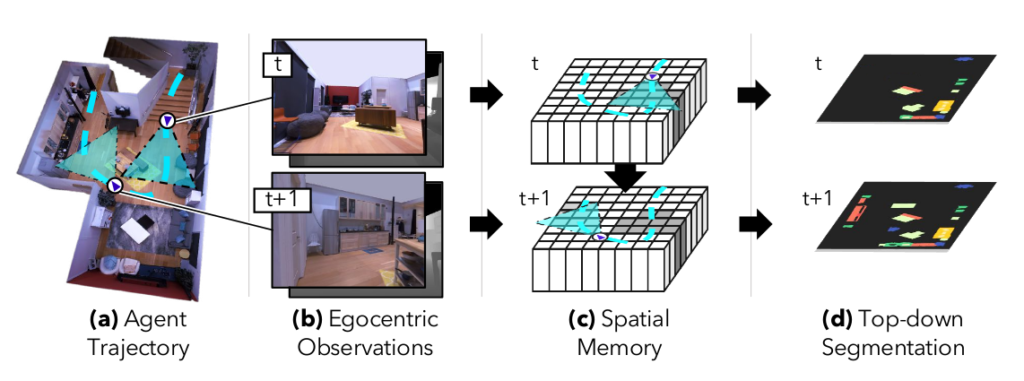Paper in AAAI 2021 on “Semantic MapNet: Building Allocentric Semantic Maps and Representations from Egocentric Views”
Abstract
We study the task of semantic mapping – specifically, an embodied agent (a robot or an egocentric AI assistant) is given a tour of a new environment and asked to build an allocentric top-down semantic map (‘what is where?’) from egocentric observations of an RGB-D camera with known pose (via localization sensors). Importantly, our goal is to build neural episodic memories and spatio-semantic representations of 3D spaces that enable the agent to easily learn subsequent tasks in the same space – navigating to objects seen during the tour (‘Find chair’) or answering questions about the space (‘How many chairs did you see in the house?’).

Towards this goal, we present Semantic MapNet (SMNet), which consists of: (1) an Egocentric Visual Encoder that encodes each egocentric RGB-D frame, (2) a Feature Projector that projects egocentric features to appropriate locations on a floor-plan, (3) a Spatial Memory Tensor of size floor-plan length × width × feature-dims that learns to accumulate projected egocentric features, and (4) a Map Decoder that uses the memory tensor to produce semantic top-down maps. SMNet combines the strengths of (known) projective camera geometry and neural representation learning. On the task of semantic mapping in the Matterport3D dataset, SMNet significantly outperforms competitive baselines by 4.01-16.81% (absolute) on mean-IoU and 3.81-19.69% (absolute) on Boundary-F1 metrics. Moreover, we show how to use the spatio-semantic allocentric representations build by SMNet for the task of ObjectNav and Embodied Question Answering.
Publication / Citation
Semantic MapNet: Building Allocentric SemanticMaps and Representations from Egocentric Views Proceedings Article
In: Proceedings of American Association of Artificial Intelligence Conference (AAAI), AAAI, 2021.

